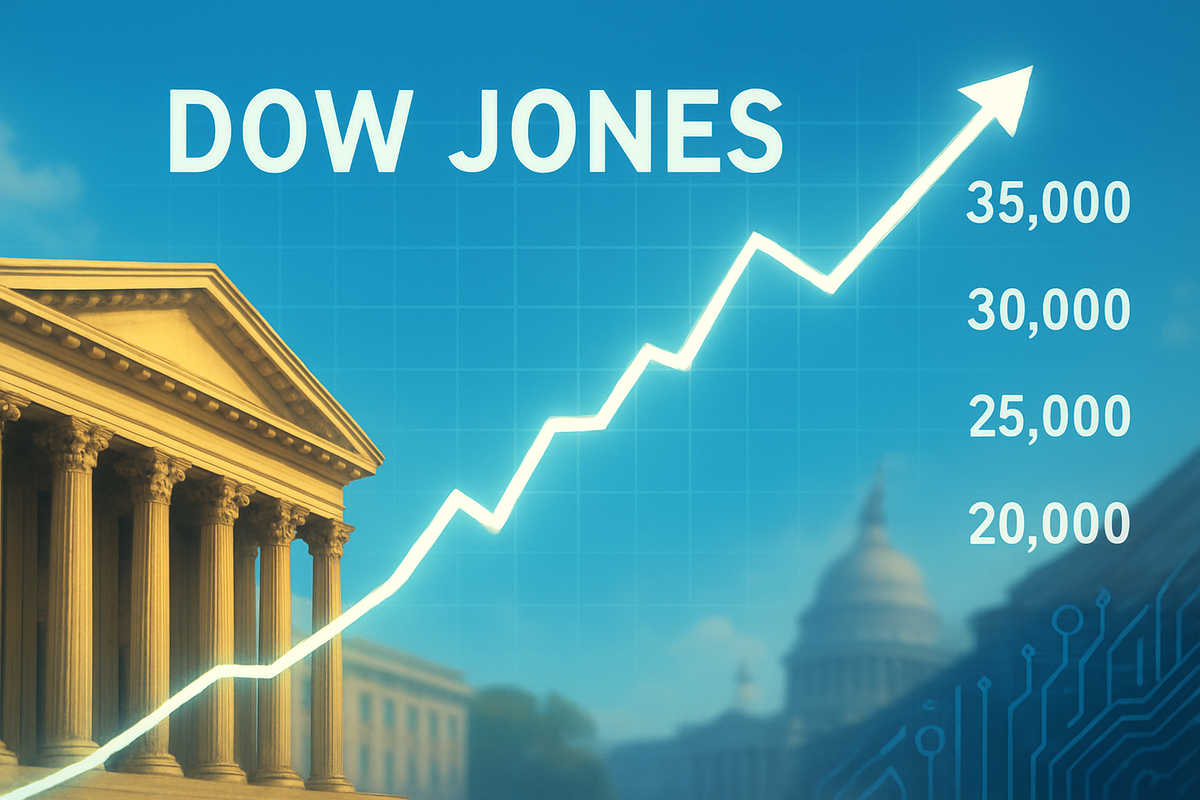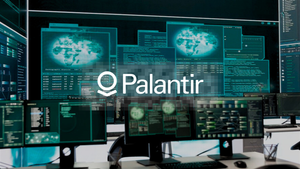
The Dow Jones Industrial Average (DJIA) has surged to unprecedented levels, marking new all-time highs this week, even as the nation holds its breath for a pivotal vote in the U.S. House of Representatives. On Tuesday, November 11, 2025, the Dow closed at a record 47,927.96, continuing its impressive rally into Wednesday, November 12, 2025, by hitting new intraday records and approaching the 48,000 mark. This remarkable market performance is primarily driven by an overwhelming sense of optimism that a protracted 43-day government shutdown is finally nearing its end, signaling a robust, albeit cautious, wave of investor confidence in the face of political uncertainty.
The timing of this market exuberance is inextricably linked to legislative developments unfolding in Washington D.C. Investors are anticipating that a swift resolution to the government impasse will alleviate economic uncertainty, allow for the release of crucial delayed economic data, and enable hundreds of thousands of federal workers to return to their jobs. However, this bullish sentiment for the Dow has coincided with a notable shift in market dynamics, as the tech-heavy Nasdaq Composite (NASDAQ: IXIC) has experienced declines, indicating a rotation away from high-growth technology stocks towards more traditional, value-oriented sectors.
Market Euphoria Ahead of House Decision
The ascent of the Dow to historic peaks on November 11th and 12th was directly influenced by the legislative progress on Capitol Hill. The Senate had already taken decisive action late Monday, November 10, 2025, by approving a comprehensive spending bill designed to fund the government through January 30, 2026, thereby putting an end to the prolonged shutdown. The spotlight now shifts to the House of Representatives, which is slated to vote on this Senate-passed legislation as soon as late afternoon on Wednesday, November 12th, or around 7 p.m. ET. The widespread expectation among investors and political observers is that House approval will pave the way for President Donald Trump's signature, officially concluding the shutdown that has cast a shadow over the economy for weeks.
The primary catalyst for the Dow's impressive surge is the pervasive optimism surrounding the imminent conclusion of the government shutdown. This positive sentiment is rooted in the belief that an end to the impasse will restore stability, unfreeze government operations, and provide much-needed clarity for businesses and consumers. Simultaneously, a distinct market dynamic has emerged, characterized by a notable shift away from high-growth technology stocks towards more traditional, value-oriented sectors. While the Dow has soared, the Nasdaq Composite (NASDAQ: IXIC) has seen declines, largely attributed to profit-taking in the technology sector, particularly among AI-related stocks. Concerns about a potential "AI bubble," coupled with specific corporate news such as SoftBank selling its stake in Nvidia (NASDAQ: NVDA) and CoreWeave adjusting its revenue forecasts downwards, have contributed to this cautious approach towards tech valuations.
The Dow's strong performance has been underpinned by robust gains in traditional investing mainstays. Major banking institutions like Goldman Sachs (NYSE: GS) and JPMorgan (NYSE: JPM), alongside financial services giant American Express (NYSE: AXP), have recorded significant increases in their stock prices. Similarly, healthcare heavyweights such as Eli Lilly (NYSE: LLY), Johnson & Johnson (NYSE: JNJ), and AbbVie (NYSE: ABBV) have contributed positively to the index. The materials and construction sectors have also shown strength, reflecting broader confidence in economic recovery and infrastructure spending. Furthermore, positive corporate announcements, including Advanced Micro Devices (NASDAQ: AMD) projecting strong long-term AI growth targets, On Holding (NYSE: ONON) raising its full-year outlook, and FedEx (NYSE: FDX) increasing its profit forecast, have bolstered the overall positive sentiment for value and cyclical stocks, underscoring the market's current preference for tangible earnings and established industries.
The immediate implications of the Dow reaching new all-time highs amidst these political developments are manifold. It signals a renewed investor confidence in the market's economic resilience and its rapid responsiveness to perceived political stability. The divergent performance between the Dow and Nasdaq highlights a prevailing market dynamic where investors are becoming more selective, prioritizing stability and perceived undervaluation in traditional industries over potentially overextended high-growth technology investments. With the shutdown expected to end, immediate attention will shift to the release of delayed economic indicators, particularly jobs and inflation reports, which are considered crucial for guiding the Federal Reserve's monetary policy decisions.
Corporate Fortunes Shift: Winners and Losers in a Reopening Economy and Value Rotation
The dual forces of an impending government reopening and a discernible market rotation from high-growth technology to more stable value stocks are poised to dramatically reshape the fortunes of public companies across various sectors. As the U.S. government prepares to resume full operations, sectors directly impacted by federal spending and regulatory functions are set for an immediate rebound, while the broader shift in investor sentiment will continue to favor established industries with strong fundamentals.
Companies deeply entrenched in government contracting stand to be among the primary beneficiaries. The cessation of a 43-day shutdown means an immediate resumption of paused federal contracts, the lifting of stop-work orders, and the initiation of new project awards. This provides a significant tailwind for defense contractors such as Lockheed Martin (NYSE: LMT), RTX (NYSE: RTX), General Dynamics (NYSE: GD), and Boeing (NYSE: BA), whose essential programs are often deemed critical. Similarly, government IT and consulting service providers like Science Applications International Corp (NYSE: SAIC), Leidos (NYSE: LDOS), CACI International (NYSE: CACI), and Booz Allen Hamilton (NYSE: BAH) will see a direct resumption of federal projects and a clearing of backlogs, directly boosting their revenues tied to federal spending.
The travel and tourism sector is also expected to experience a strong resurgence. The reopening of national parks, museums, and other federal attractions, coupled with the return of furloughed air traffic controllers and other essential personnel, will lead to increased consumer confidence and a surge in travel and leisure activities. Airlines such as Delta Air Lines (NYSE: DAL) and Southwest Airlines (NYSE: LUV) will benefit from eased air traffic control staffing concerns and increased passenger volume. Hospitality giants like Marriott International (NASDAQ: MAR) and Hilton Worldwide (NYSE: HLT) are likely to see increased bookings as federal employees receive back pay and consumer confidence in travel improves. Furthermore, the financial services industry, including major players like JPMorgan Chase (NYSE: JPM), Bank of America (NYSE: BAC), and Wells Fargo (NYSE: WFC), will benefit from the resumption of federal agency operations, such as the Small Business Administration (SBA) processing loans and government income verification for mortgages, clearing regulatory backlogs and enabling paused financial transactions.
Conversely, the ongoing market rotation poses challenges for the high-growth technology sector. Investors are increasingly moving away from companies valued primarily for their distant future growth potential towards those with solid current fundamentals, stable earnings, and often attractive dividends. This makes high-flying tech stocks, particularly those with elevated price-to-earnings (P/E) ratios, more vulnerable. Companies in semiconductors and AI infrastructure, such as NVIDIA (NASDAQ: NVDA) and Advanced Micro Devices (NASDAQ: AMD), while critical for future tech innovation, may face pressure due to their high valuations. Similarly, established software and cloud computing giants like Microsoft (NASDAQ: MSFT) and Salesforce (NYSE: CRM), along with e-commerce and social media leaders like Amazon (NASDAQ: AMZN), Meta Platforms (NASDAQ: META), and Alphabet (NASDAQ: GOOGL), could experience headwinds as investors prioritize more tangible, immediate returns and less speculative growth. Innovative, high-growth companies such as Tesla (NASDAQ: TSLA) and Palantir Technologies (NYSE: PLTR) are particularly sensitive to shifts in market sentiment towards future potential versus current profitability.
Broader Implications: A Market in Transition and Policy Under Scrutiny
The Dow's unprecedented surge to all-time highs, set against the backdrop of an impending government shutdown resolution and a pronounced market rotation from technology to value stocks, signals a profound recalibration of investor sentiment and underlying economic forces. This confluence of events not only reflects significant shifts in industry trends but also carries distinct ripple effects across the corporate landscape, with critical regulatory implications and notable historical precedents.
The market dynamics observed in November 2025 point towards a "Great Rotation" of investment capital, a trend that has been steadily gaining momentum since late 2024. Investors are actively reallocating funds away from high-flying technology and Artificial Intelligence (AI) stocks towards more established, value-oriented sectors. This pivot is largely fueled by mounting concerns over stretched valuations within the tech sector, particularly after a prolonged period of significant AI-driven rallies, and evolving macroeconomic conditions that increasingly prioritize fundamental strength and stability. This trend signifies a broader market rally, extending beyond a handful of mega-cap tech giants and indicating an improved market breadth, where investor confidence is spreading across diverse industries rather than concentrating on a select few.
This rotation has distinct ripple effects. High-growth technology firms, especially those in the AI space like Nvidia (NASDAQ: NVDA) and CoreWeave, are experiencing pressure as investors lock in profits and reallocate capital. This re-evaluation demands that tech companies demonstrate concrete profitability and sustainable growth, moving beyond mere speculative potential. Conversely, companies within the value and defensive sectors are finding it easier to attract capital for operational improvements and strategic initiatives. For instance, increased capital expenditure in the energy sector, driven by higher commodity prices, directly benefits oilfield service companies and equipment manufacturers. The shift also encourages companies across all sectors to reassess their capital allocation strategies and enhance supply chain resilience, adapting to a potentially more stable yet evolving economic landscape.
The resolution of the government shutdown carries several critical regulatory and policy implications. Foremost among these is the immediate unblocking of a significant backlog of crucial economic data, including vital reports on jobs, inflation, retail sales, and GDP. The release of this data is indispensable for the Federal Reserve and investors to gain a clearer, data-driven picture of the economy's health, which will, in turn, inform future monetary policy decisions, particularly regarding interest rate adjustments. The absence of this data had previously left markets "flying blind." While the immediate political uncertainty of the shutdown is resolved, underlying concerns about the U.S. fiscal outlook and national debt persist. Future fiscal policy debates, especially under a potentially Republican-controlled administration, could involve deregulation and tax incentives that further influence investment shifts.
Historically, government shutdowns have generally exerted a modest and temporary impact on financial markets, particularly if they are brief, with economic activity often delayed rather than permanently lost. For instance, the S&P 500 (NYSEARCA: SPY) has, on average, gained 0.3% during shutdowns and seen a 13% jump in the 12 months following their resolution. However, experts caution that past performance is not a guarantee, as current political dynamics always introduce unique variables. The tech-to-value rotation is also a recurring theme in market cycles, often tied to macroeconomic changes, earnings cycles, inflation expectations, and monetary policy. While growth stocks, particularly tech, have dominated the market for the past two decades, value stocks have historically outperformed growth stocks over longer periods. Such rotations often signal a maturing economic cycle where companies with strong fundamentals, stable earnings, and reasonable valuations become more attractive than ultra-expensive growth names.
The Road Ahead: Navigating a Shifting Economic and Market Landscape
As the market celebrates the Dow's record highs and anticipates the formal end of the government shutdown, the path forward for the economy and financial markets is marked by both short-term possibilities and long-term structural shifts. Businesses and investors alike will need to strategically adapt to navigate an environment characterized by moderating global growth, evolving technological landscapes, and persistent geopolitical uncertainties.
In the short term, extending from late 2025 into mid-2026, the market is poised for continued volatility and rapid shifts in leadership. The immediate resolution of the government shutdown, while injecting a surge of investor confidence, also means the release of previously postponed crucial economic data. This data, covering jobs, inflation, and retail sales, will provide the Federal Reserve with a clearer picture to inform its future monetary policy decisions, particularly regarding interest rates. While a shutdown typically causes a temporary reduction in real GDP growth, much of this lost economic activity is usually recovered. However, some analyses suggest a potential lingering drag on productivity and hiring into early 2026. The ongoing tech-to-value rotation will likely persist, with capital continuing to flow from high-flying technology stocks towards established industries like financial services, energy, industrials, and healthcare, driven by escalating valuation concerns within the tech space.
Looking further ahead, beyond 2026, several long-term possibilities will shape the economic and market landscape. Global potential output growth is projected to moderate, potentially reaching 2.7% by the early 2030s. However, sustainability is transforming into a core business model, with companies focused on eco-friendly operations and strong ESG practices proving both profitable and resilient. Sectors like renewable energy, electric vehicles (EVs), water conservation technology, and sustainable agriculture are poised for sustained growth. Furthermore, Artificial Intelligence (AI) and automation will remain central to nearly every modern industry, with AI-driven analytics expected to deliver significant returns across sectors, and investment in next-generation computing and data center infrastructure projected to reach substantial levels by 2030. Demographic shifts, particularly an aging global population, will also continue to drive long-term growth in healthcare, including medical technology and pharmaceuticals.
To navigate this evolving environment, businesses will need to prioritize agility and digital transformation, leveraging advanced technologies like AI, automation, and cloud computing to streamline operations and respond rapidly to market changes. Customer-centricity, powered by AI for personalized experiences, will be crucial, as will revenue diversification through complementary digital products and subscription models. Supply chain resilience, moving from a focus on speed and cost to robustness, will be paramount in the face of geopolitical instability. For investors, diversification and selectivity will be key. Given continued market volatility and divergence across regions, a patient and disciplined approach, combined with global diversification, particularly into international equities and emerging markets, is increasingly recommended to identify opportunities and manage risks.
The market presents both significant opportunities and challenges. Growth sectors such as renewable energy, electric vehicles, AI, automation, FinTech, EdTech, and biotech offer compelling avenues for investment. An infrastructure super-cycle, driven by AI needs, reshoring initiatives, and sustainable development, is also expected to benefit industrials and related sectors. However, persistent volatility, geopolitical risks (such as U.S.-China relations or conflicts in the Middle East), and the potential for new tariffs or trade shocks could disrupt supply chains and fuel inflation. High interest rates, even if gradually easing, will continue to pose challenges for businesses and households, while a significant digital talent gap could hinder innovation. Potential scenarios range from a base case of balanced deceleration with gradual Fed rate cuts to a risk scenario of a technical recession in the U.S. during 2026, driven by faltering job growth and the lingering impact of high interest rates.
Market Wrap-up: A New Chapter of Resilience and Adaptation
The recent all-time highs of the Dow Average, occurring just as the U.S. House of Representatives prepares to vote on ending a prolonged government shutdown, mark a pivotal moment for financial markets. This convergence of events underscores a powerful narrative of market resilience and a strategic recalibration of investor priorities. The immediate takeaway is a renewed sense of confidence in the market's ability to absorb political shocks and respond positively to stability. However, this optimism is tempered by the distinct rotation of capital from high-growth technology stocks to more stable, value-oriented sectors, signaling a more mature and discerning investment environment.
Moving forward, the market will be keenly focused on the influx of delayed economic data. These reports will provide critical insights for the Federal Reserve's monetary policy decisions and offer a clearer picture of the economy's underlying health post-shutdown. The sustainability of the Dow's current gains, particularly in light of moderating global growth forecasts and sticky inflation, will be a key metric to watch. Investors should prepare for continued market divergence, with traditional industries potentially outperforming, while high-valuation tech companies face ongoing scrutiny.
The lasting impact of this period will likely be a reinforced emphasis on fundamental strength, robust cash flows, and diversified portfolios. Businesses are compelled to prioritize agility, digital transformation, and resilient supply chains to thrive in a volatile global landscape. For investors, the coming months will demand a strategic and adaptive approach:
- Watch for Fed Signals: Closely monitor the Federal Reserve's statements and actions as new economic data becomes available, particularly regarding interest rate trajectories.
- Sector Rotation: Observe whether the tech-to-value rotation deepens or if there's a re-balancing. Opportunities may arise in undervalued sectors or in tech companies demonstrating clear profitability and effective AI integration.
- Geopolitical Developments: Stay vigilant on global geopolitical events, as these can swiftly impact commodity prices, supply chains, and overall market sentiment.
- Corporate Earnings: Focus on corporate earnings reports for signs of sustainable growth, cost management, and the ability of companies to adapt to changing economic conditions.
In essence, the market is not just recovering from a shutdown; it is actively re-shaping itself. This period is less about a return to old norms and more about forging a new chapter defined by strategic adaptation, selective investment, and a renewed appreciation for fundamental economic stability.
This content is intended for informational purposes only and is not financial advice





